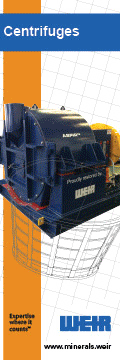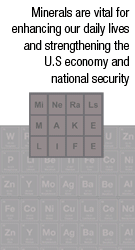Microbial Life Discovered Deep in Canada’s Kidd Creek Mine
If it’s true there, over a mile deep, you wonder if this is true all around the Earth. —John Spear, Colorado School of Mines

[Click image to enlarge]
Researchers have uncovered the first direct evidence of resident microbes in Kidd Creek Mine, a 3-kilometer-deep copper and zinc mine in Ontario. The findings, published last month (July 18) in Geomicrobiology Journal, confirm previous work indicating that ancient, sulfate-rich water in the region could support what researchers call “deep microbial life,” and add to growing evidence that there’s a vast biosphere thriving in the Earth’s crust that has little or no interaction with the surface.
“This paper is groundbreaking, so to speak,” says John Spear, a microbial ecologist at the Colorado School of Mines who was not involved in the work. “They were able to get an idea of the amount of native microbial biomass . . . and they were able to confirm that the waters that the microbes are living in are host waters—they’re not contaminated or impacted by water coming from the surface.”
Studies of deep mines and boreholes over the last decade have documented signs of microbes in several areas of the Earth’s continental crust—a hot and dark environment traditionally thought to be inhospitable to life.
In 2013, University of Toronto geologist Barbara Sherwood Lollar and colleagues described the discovery of water at a depth of 2.4 kilometers in Kidd Creek Mine that had been trapped in fractures in the rock for hundreds of millions to several billion years — making it the oldest-known water on Earth.
The team later reported that the water, which is rich in sulfates and hydrogen, had likely contained sulfate-reducing bacteria in the past, and could theoretically still support a community of microbes. “The burning question for us was: What’s there now?” Sherwood Lollar tells The Scientist.
In the current study, the researchers collected additional water samples from holes drilled inside the mine. Studying these samples under a microscope, they discovered microbial cells nestled among particles of sediment. “It’s great to be able to see that they’re there,” says Sherwood Lollar. “We were confident that they likely were, but it’s a very long journey from that to a series of hard lines of evidence that actually support it.”
Compared to service water — water supplied to the mine from a nearby lake on the surface — the density of microbial organisms in the fracture water was low, the team found: approximately 1,000 to 10,000 cells/ml, as opposed to the 100,000 cells/ml in the water coming from above ground.
The researchers also analyzed the metabolic activity of microbes in the sample, by incubating cells with various food sources and then recording whether or not that food was metabolized. This type of analysis can’t directly provide taxonomic information or detect microbes that aren’t active. But it did show, as Sherwood Lollar and her colleagues had predicted, that the active microbial community consisted almost entirely of sulfate reducers.
“Sulfate reducers are using sulfate and some reduced carbon compound . . . to fix carbon in the subsurface,” notes Spear, “meaning that these sulfate reducers could be primary producers in the subsurface of the Kidd Creek Mine. And if it’s true there, over a mile deep, you wonder if this is true all around the Earth.”
Tom Kieft, a biologist at New Mexico Tech who has collaborated with Sherwood Lollar but was not involved in the current work, praises the study for its meticulous approach. The researchers used a battery of geochemical tests to compare the ancient fracture water with water from the surface, and did “a very careful job of eliminating the potential for contamination,” he says. “Demonstrating that there are microbes in water that’s been sequestered from the atmosphere and from the surface for that long is an important finding.”
Lotta Purkamo, a geomicrobiologist with the Geological Survey of Finland who was also not involved in the work, agrees that the study was well carried out, but notes that the results themselves aren’t surprising given what’s already known about the mine and about other parts of the deep biosphere. The paper is a “good start,” she says, but “I’m still waiting for the big paper from Kidd Creek.”
In particular, genetics assays could provide useful information about all the taxa that are present in the Kidd Creek community — as opposed to just those that are active and therefore detectable by metabolic assays. “When you get the actual names of the microbes, then you can compare those to [other sites],” and make broader conclusions about deep biosphere environments, she says.
The University of Toronto team is collaborating with researchers at other institutions to generate these genetic data — a challenge given the low biomass of the fracture water samples — to be included in a future publication, Sherwood Lollar says. “Some people are doing single-cell genomics, some are doing metagenomics, some are doing 16S [sequencing],” she says. “That will allow us to compare results and hopefully get the strongest possible group interpretation.”
She notes that she hopes the current study, as well as providing direct evidence for microbes in Kidd Creek, can guide future studies of life in deep subsurface environments. “It tries to provide a roadmap” for how to carry out this sort of research in other places, Sherwood Lollar says, adding that she expects many more reports to come of microbial life underground.
“The more we continue to show that life shows up in all of these different places, the more we understand that these are generalizable to the planet,” she says. “What it means, I would expect, is [that] we are likely to find these organisms almost anywhere we go look in these kinds of settings around the world.”
By: Catherine Offord, The Scientist





















